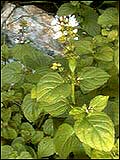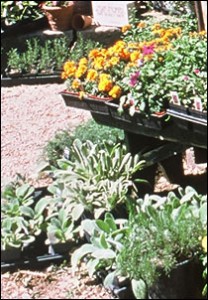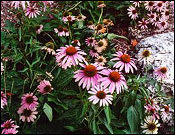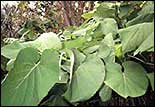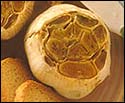|
Almost everyone enjoys the cool, penetrating, sometimes fruity kiss of mint. Mints are attractive and boast a variety of handsome leaves. They also sport spiked or clustered heads of tiny flowers. The genus Mentha includes 18 pure species and more than 2,000 named variations. Mints are promiscuous cross-pollinators and commonly produce hybrid seedlings but few are significantly different. |
Planting & CareAs wonderful as mints can be, we become exasperated by their invasive habits. A single plant from a 3″ pot can spread to fill a square yard by it’s second year. Propagate mint by cutting or division. Plant mint in rich, moist soil exposed to full sun to partial shade. Set plants 2′ apart; they will quickly fill in. Harvesting and UseMint leaves are best when fresh, but may be used in dried teas, potpourri and bath bags. Freeze small individual sprigs in ice cube trays for beverages. Harvest anytime. The more you clip the better the mint will be. Tolerates sunny locations if watered frequently, but prefer a shady afternoon soil with rich well drained soil. A slight freeze will cause the leaves to die back, but plants rebound rapidly when warm weather returns. This review is taken from Bill & Sylvia Varney’s book Herbs Growing and Using the Plants of Romance, our beautifully illustrated complete guide to selecting, growing and using herbs, which includes complete descriptions of more than 100 herbs. |

